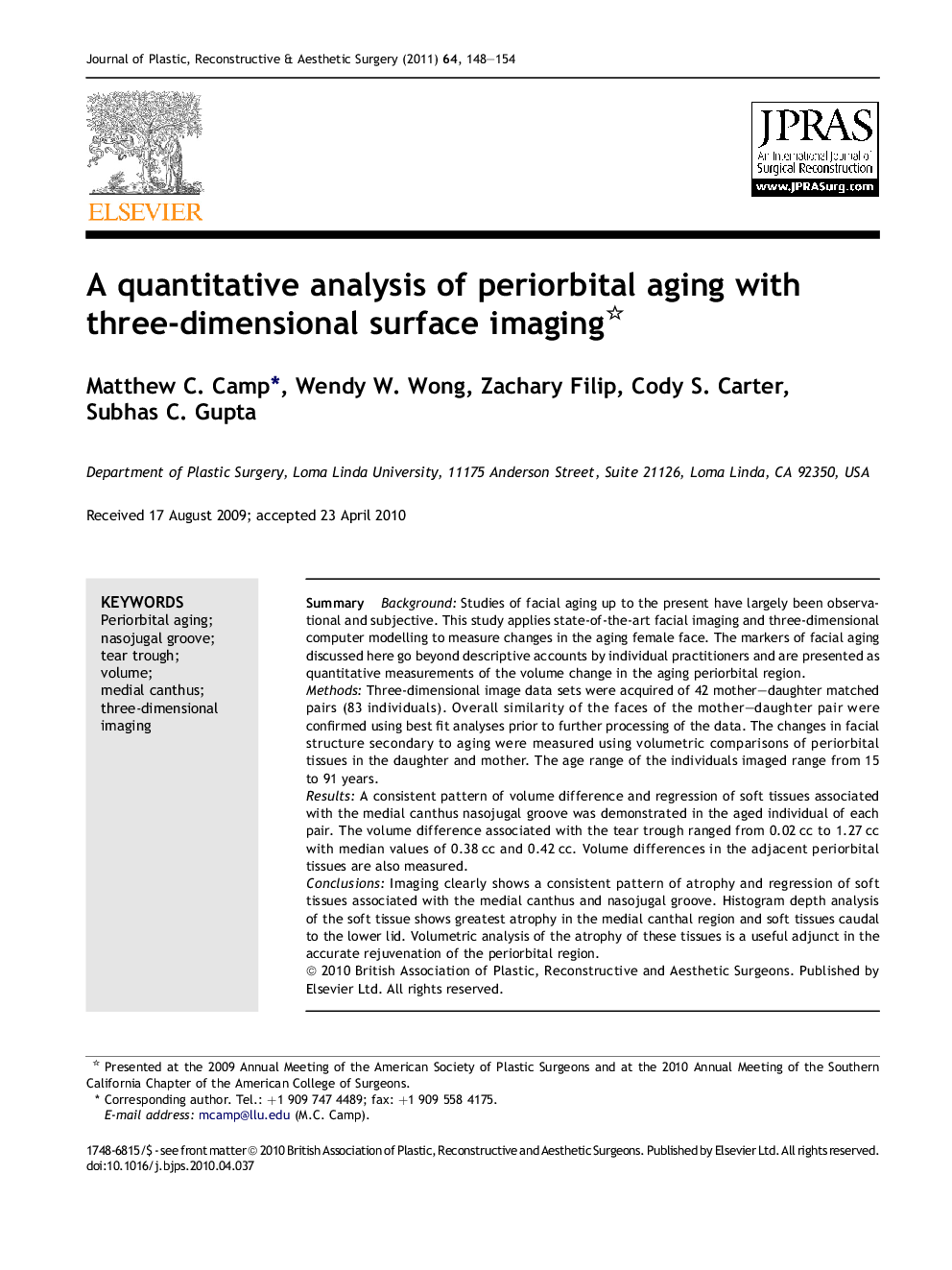| Article ID | Journal | Published Year | Pages | File Type |
|---|---|---|---|---|
| 4119431 | Journal of Plastic, Reconstructive & Aesthetic Surgery | 2011 | 7 Pages |
SummaryBackgroundStudies of facial aging up to the present have largely been observational and subjective. This study applies state-of-the-art facial imaging and three-dimensional computer modelling to measure changes in the aging female face. The markers of facial aging discussed here go beyond descriptive accounts by individual practitioners and are presented as quantitative measurements of the volume change in the aging periorbital region.MethodsThree-dimensional image data sets were acquired of 42 mother–daughter matched pairs (83 individuals). Overall similarity of the faces of the mother–daughter pair were confirmed using best fit analyses prior to further processing of the data. The changes in facial structure secondary to aging were measured using volumetric comparisons of periorbital tissues in the daughter and mother. The age range of the individuals imaged range from 15 to 91 years.ResultsA consistent pattern of volume difference and regression of soft tissues associated with the medial canthus nasojugal groove was demonstrated in the aged individual of each pair. The volume difference associated with the tear trough ranged from 0.02 cc to 1.27 cc with median values of 0.38 cc and 0.42 cc. Volume differences in the adjacent periorbital tissues are also measured.ConclusionsImaging clearly shows a consistent pattern of atrophy and regression of soft tissues associated with the medial canthus and nasojugal groove. Histogram depth analysis of the soft tissue shows greatest atrophy in the medial canthal region and soft tissues caudal to the lower lid. Volumetric analysis of the atrophy of these tissues is a useful adjunct in the accurate rejuvenation of the periorbital region.
